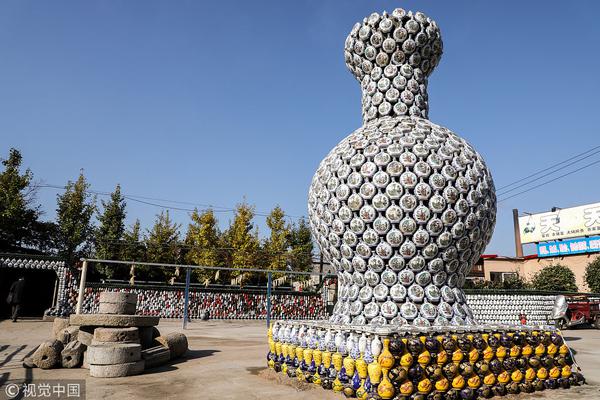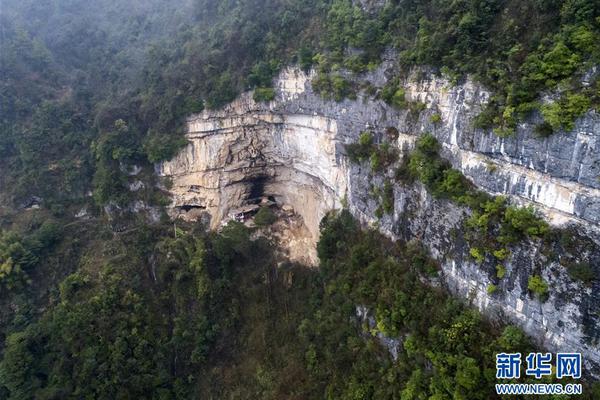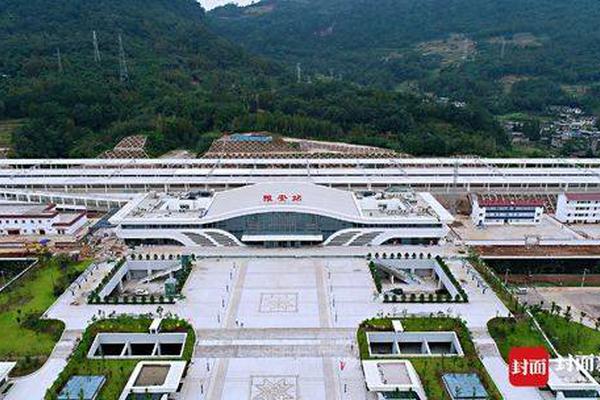
1. The hierarchical structure of the computer system is high-level language machine level, assembly language machine level, traditional machine language machine level, and microprogram machine level in order from high to low. The computer system is hierarchical, and it is composed of a multi-level hierarchical structure.
2. The hierarchy of the computer system includes: hardware layer, operating system layer, system program layer, and application layer. The hardware layer provides basic computable resources, including processors, registers, memory, and various I/O facilities and devices, which are the basis for the work of operating systems and upper-level software.
3. The hierarchical structure of the computer system includes: hardware layer, operating system layer, system program layer, and application layer. The hardware layer provides basic computability resources, including processor,Memory, memory, and various I/O facilities and equipment are the basis for the work of operating systems and upper-level software.
4. Computer software systems can usually be divided into the following levels: application software layer: application software layer is software directly used by users, including various office software, games, browsers, audio and video software, etc. The hierarchy of computer systems includes: hardware layer, operating system layer, system program layer and application layer.

The structure of ecosystems includes biome, biodiversity, species composition, food chain and network, environmental factors, etc. Specifically, the structure of ecosystems involves the interaction between different species and their relationship with abiotic factors.
The structure of the ecosystem refers to the relatively orderly and stable state of various components of the ecosystem in space and time. It includes the content of morphology and nutritional relationships.
The structure of the ecosystem includes the following aspects: the composition of the ecosystem: the ecosystem is composed of biological parts and non-biological parts.The biological part includes plants, animals and microorganisms, etc., which play the role of producers, consumers and decomposers in the ecosystem.
Ecosystem structure refers to the relatively orderly and stable state of various components of the ecosystem in space and time. An ecosystem is an orderly structured system formed by the combination of biological and non-living interactions.
The structure of the ecosystem includes biome, biological population, ecological niche, ecosystem, ecological process, food chain, food network, ecological balance, ecosystem health, and ecosystem service functions. The relevant knowledge is as follows: Biome: refers to a part of an ecosystem composed of interacting biological populations in a specific geographical location.
1, the structure of the information system can be divided into the following: infrastructure layer: composed of hardware, system software and network that support the operation of the computer information system.
2. It is generally divided into four levels: infrastructure layer, resource management, business logic layer and application performance layer. Information system is a human-machine integrated system composed of computer hardware, network and communication equipment, computer software, information resources, information users and rules and regulations for the purpose of processing information flow.
3. The three-layer structure is: data access layer: it mainly depends on whether your data layer contains logical processing. In fact, its functions mainly complete the operation of each data file. Don't worry about other operations. Located in the outermost layer (top layer), it is the closest to the user.
4. The structure of the management information system can be divided into three categories according to the management level: high-level, middle-level and grass-roots level.
5. [Answer]: There are four basic components of the management information system: information source, information processor, information user and information manager. The source of information refers to the place where the original data is generated. According to the origin of the original data, the information source can be divided into internal information source and external information source.
6. Information system is a human-machine integrated system composed of computer hardware, network and communication equipment, computer software, information resources, information users and rules and regulations for the purpose of processing information flow. There are five basic functions, namely input, storage, processing, output and control of information.
The hierarchical structure of the computer system is high-level language machine level, assembly language machine level, traditional machine language machine level and microprogram machine level in order from high to low. The computer system is hierarchical, and it is composed of a multi-level hierarchical structure.
Operating system level --- Level 3 Judging from the basic functions of the operating system, on the one hand, it directly manages the software and hardware resources in traditional machines, and on the other hand, it is an extension of traditional machines. Assembly language level --- Level 4 The programming tool of this level is an assembly language instruction set.
The hierarchy of computer systems includes: hardware layer, operating system layer, system program layer, and application layer. The hardware layer provides basic computable resources, including processors, registers, memory, and various I/O facilities and devices, which are the basis for the work of operating systems and upper-level software.
The hierarchical structure of the computer can be divided into five layers: hardware layer, microprogram layer, instruction set architecture layer, operating system layer and application layer. The hardware layer of the computer includes various hardware devices, such as the central processing unit (CPU), memory, hard disk, monitor, etc.
Computer system hierarchy refers to the computer system composed of two major parts, hardware and software. According to the functional subdivision, it can be divided into 7 layers. The computer system is divided into multi-level hierarchical structure according to functions, which is conducive to the correct understanding of the working process of the computer system and clarifying the software and hardware in the computer. The status and role in the system.
Jewelry trade HS code references-APP, download it now, new users will receive a novice gift pack.
1. The hierarchical structure of the computer system is high-level language machine level, assembly language machine level, traditional machine language machine level, and microprogram machine level in order from high to low. The computer system is hierarchical, and it is composed of a multi-level hierarchical structure.
2. The hierarchy of the computer system includes: hardware layer, operating system layer, system program layer, and application layer. The hardware layer provides basic computable resources, including processors, registers, memory, and various I/O facilities and devices, which are the basis for the work of operating systems and upper-level software.
3. The hierarchical structure of the computer system includes: hardware layer, operating system layer, system program layer, and application layer. The hardware layer provides basic computability resources, including processor,Memory, memory, and various I/O facilities and equipment are the basis for the work of operating systems and upper-level software.
4. Computer software systems can usually be divided into the following levels: application software layer: application software layer is software directly used by users, including various office software, games, browsers, audio and video software, etc. The hierarchy of computer systems includes: hardware layer, operating system layer, system program layer and application layer.

The structure of ecosystems includes biome, biodiversity, species composition, food chain and network, environmental factors, etc. Specifically, the structure of ecosystems involves the interaction between different species and their relationship with abiotic factors.
The structure of the ecosystem refers to the relatively orderly and stable state of various components of the ecosystem in space and time. It includes the content of morphology and nutritional relationships.
The structure of the ecosystem includes the following aspects: the composition of the ecosystem: the ecosystem is composed of biological parts and non-biological parts.The biological part includes plants, animals and microorganisms, etc., which play the role of producers, consumers and decomposers in the ecosystem.
Ecosystem structure refers to the relatively orderly and stable state of various components of the ecosystem in space and time. An ecosystem is an orderly structured system formed by the combination of biological and non-living interactions.
The structure of the ecosystem includes biome, biological population, ecological niche, ecosystem, ecological process, food chain, food network, ecological balance, ecosystem health, and ecosystem service functions. The relevant knowledge is as follows: Biome: refers to a part of an ecosystem composed of interacting biological populations in a specific geographical location.
1, the structure of the information system can be divided into the following: infrastructure layer: composed of hardware, system software and network that support the operation of the computer information system.
2. It is generally divided into four levels: infrastructure layer, resource management, business logic layer and application performance layer. Information system is a human-machine integrated system composed of computer hardware, network and communication equipment, computer software, information resources, information users and rules and regulations for the purpose of processing information flow.
3. The three-layer structure is: data access layer: it mainly depends on whether your data layer contains logical processing. In fact, its functions mainly complete the operation of each data file. Don't worry about other operations. Located in the outermost layer (top layer), it is the closest to the user.
4. The structure of the management information system can be divided into three categories according to the management level: high-level, middle-level and grass-roots level.
5. [Answer]: There are four basic components of the management information system: information source, information processor, information user and information manager. The source of information refers to the place where the original data is generated. According to the origin of the original data, the information source can be divided into internal information source and external information source.
6. Information system is a human-machine integrated system composed of computer hardware, network and communication equipment, computer software, information resources, information users and rules and regulations for the purpose of processing information flow. There are five basic functions, namely input, storage, processing, output and control of information.
The hierarchical structure of the computer system is high-level language machine level, assembly language machine level, traditional machine language machine level and microprogram machine level in order from high to low. The computer system is hierarchical, and it is composed of a multi-level hierarchical structure.
Operating system level --- Level 3 Judging from the basic functions of the operating system, on the one hand, it directly manages the software and hardware resources in traditional machines, and on the other hand, it is an extension of traditional machines. Assembly language level --- Level 4 The programming tool of this level is an assembly language instruction set.
The hierarchy of computer systems includes: hardware layer, operating system layer, system program layer, and application layer. The hardware layer provides basic computable resources, including processors, registers, memory, and various I/O facilities and devices, which are the basis for the work of operating systems and upper-level software.
The hierarchical structure of the computer can be divided into five layers: hardware layer, microprogram layer, instruction set architecture layer, operating system layer and application layer. The hardware layer of the computer includes various hardware devices, such as the central processing unit (CPU), memory, hard disk, monitor, etc.
Computer system hierarchy refers to the computer system composed of two major parts, hardware and software. According to the functional subdivision, it can be divided into 7 layers. The computer system is divided into multi-level hierarchical structure according to functions, which is conducive to the correct understanding of the working process of the computer system and clarifying the software and hardware in the computer. The status and role in the system.
Trade data-driven LCL/FCL strategies
author: 2024-12-23 22:22Trade data-driven inventory optimization
author: 2024-12-23 21:46Global trade data accuracy improvement
author: 2024-12-23 21:23How to measure supplier performance
author: 2024-12-23 20:20How to manage trade credit risks
author: 2024-12-23 20:18Global supply chain partner networks
author: 2024-12-23 22:11Lithium batteries HS code classification
author: 2024-12-23 21:07Cotton (HS code ) trade insights
author: 2024-12-23 21:06HS code-based tariff reconciliation
author: 2024-12-23 19:56Textile exports HS code breakdown
author: 2024-12-23 19:50 Automotive supply chain transparency tools
Automotive supply chain transparency tools
252.89MB
Check Surgical instruments HS code classification
Surgical instruments HS code classification
532.99MB
Check How to find untapped export partners
How to find untapped export partners
122.55MB
Check Trade finance structuring by HS code
Trade finance structuring by HS code
247.78MB
Check Asia import data insights
Asia import data insights
655.28MB
Check Shipping lane performance metrics
Shipping lane performance metrics
728.84MB
Check HS code-driven portfolio diversification
HS code-driven portfolio diversification
854.14MB
Check Trade data integration with CRM
Trade data integration with CRM
925.56MB
Check How to access global trade archives
How to access global trade archives
851.16MB
Check Global trade tender evaluation tools
Global trade tender evaluation tools
475.33MB
Check Comparative industry trade benchmarks
Comparative industry trade benchmarks
197.92MB
Check HS code-based tariff calculations
HS code-based tariff calculations
748.64MB
Check Trade intelligence for aerospace industry
Trade intelligence for aerospace industry
498.27MB
Check HS code automotive parts mapping
HS code automotive parts mapping
625.77MB
Check Top trade data keywords for SEO
Top trade data keywords for SEO
276.17MB
Check Customs data verification services
Customs data verification services
591.22MB
Check Premium trade data intelligence subscriptions
Premium trade data intelligence subscriptions
657.27MB
Check Russia HS code-based trade compliance
Russia HS code-based trade compliance
245.22MB
Check Carbon steel HS code references
Carbon steel HS code references
662.78MB
Check Processed nuts HS code references
Processed nuts HS code references
297.29MB
Check How to improve trade compliance
How to improve trade compliance
526.98MB
Check How to improve trade compliance
How to improve trade compliance
883.56MB
Check Trade compliance training resources
Trade compliance training resources
231.68MB
Check Real-time port data insights
Real-time port data insights
295.64MB
Check supply chain transparency
supply chain transparency
573.55MB
Check HS code research for EU markets
HS code research for EU markets
932.54MB
Check Middle East trade compliance platform
Middle East trade compliance platform
462.95MB
Check HS code for artisanal goods
HS code for artisanal goods
849.72MB
Check Rubber exports HS code classification
Rubber exports HS code classification
991.54MB
Check Pharmaceutical imports by HS code
Pharmaceutical imports by HS code
856.41MB
Check HS code-driven route selection
HS code-driven route selection
945.17MB
Check HS code verification in Middle Eastern markets
HS code verification in Middle Eastern markets
771.95MB
Check Renewable energy equipment HS code mapping
Renewable energy equipment HS code mapping
521.35MB
Check Advanced tariff classification tools
Advanced tariff classification tools
859.63MB
Check International trade knowledge base
International trade knowledge base
634.35MB
Check How to verify supplier credibility with data
How to verify supplier credibility with data
244.37MB
Check
Scan to install
Jewelry trade HS code references to discover more
Netizen comments More
626 How to forecast seasonal import demands
2024-12-23 22:14 recommend
2957 Trade data for food and beverage industry
2024-12-23 21:51 recommend
2075 Export data analysis for consumer goods
2024-12-23 21:01 recommend
2892 How to comply with global trade regulations
2024-12-23 20:55 recommend
2548 HS code-driven risk management frameworks
2024-12-23 20:41 recommend